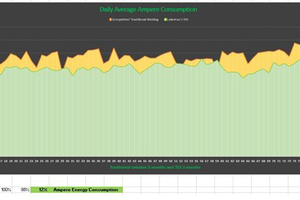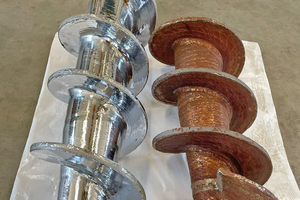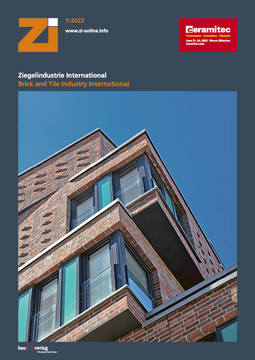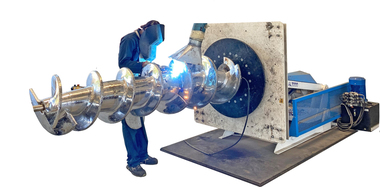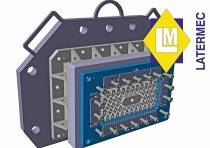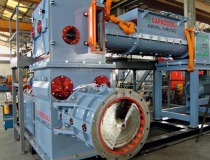Saving energy trough Latermec TES wear proof treatment
Latermec is an Italian company which successfully operates in brick and ceramic industries for more than 30 years, offering regeneration and coating services on all of the components of the extrusion process (augers, dies, grids and other spare parts).
Latermec Tenax Energy Saving Wear Proof System (TES)
Latermec experience has developed an innovative wear proof system for extruders augers which allows an energy saving up to 15 % compared to traditional hard welding. On the outside of the auger-rim one uses Tungsten carbides of hardness HRC 82 that allow to keep the diameter of the auger unchanged, while on the faces of the wing one uses complex carbides – specially designed by Latermec – that do not crack and in addition allow the chroming process, to produce surfaces free of cracks.
The chroming process is carried out directly in our company and the chrome layer acts as an additional layer of auger surface protection and let the clay slide more easily, reducing friction. This combination reaches the perfect total hardness, as a result we have a longer lifespan of the auger, reducing friction and as a result lowers energy consumption by up to 15- 20 %.
Case Study
As proof of these results, a study was carried out in collaboration with one of the largest brick factory groups on the German market: Leipfinger Bader. The data of the main production / energy consumption parameters of the extruder augers recorded with traditional coating against augers recorded with Tenax Energy Saving had been compared with each other.
The data collection lasted six months (three months for each auger) and examined 17,280 measurements per day. The data, collected by Leipfinger Bader‘s own technicians, were then compared at the end of the period.
Two different methods have been used to realize the study.
1st method: the corresponding 3 months of differentiated production relating to the two different treatments were compared, using different supply sequenzes of block-sizes (2-3 die-changes/ day).
2nd method: 24 hours of continuous production were compared for both technologies, based on the use of the same die/ final product.
The results showed in this case a minimum energy saving of 12 %, and up to 15 % in the continuous use of the same die, obtained with the TES auger of Latermec. In many other cases scattered throughout Europe and beyond, even higher results have been achieved, around 20 %.
Other Advantages
The energy saving is one of the many obtainable advanteges of the TES system. Let’s take a look at the other ones in the detail.
Longer Life Cycle: the chroming layer represents a further wear proof protection, which allows to extend the augers life cycle. Possibility to be regenerated several times without side effects: during the regeneration process, the extruder augers are initially dechromed, this treatment restores them to their initial state while maintaining the unaltered characteristics of the base material.
After the dechroming process the augers are repaired, then the wear proof treatment follows, and finally the hard chroming.
This permits that following regenerations are at reduced costs, in fact on worn TES augers the replacement of the flaps it is not necessary (mandatory operation in case of augers treated with hard welding).
Disadvantages of the traditional wear proof treatment compared to the TES-Latermec treatment
During the regeneration of augers treated with traditional hard coating, both the flaps and the hub are almost completely covered by a very hard wear-resistant welded material. This treatment (integral hard welding) is performed because the augers must resist wear without the additional protection offered by the chrome plating.
When the augers have finished their life cycle and need to be regenerated, hard coating is added on top of the existing one (due to its hardness it cannot be removed). In this way, the hardness of the entire auger is increased and, consequently, the cracks increase, compromising the ideal functioning of the extrusion.
Subsequent regenerations are even more complicated, because with the frequent addition of hard coating, the overall hardness of the auger increases and the flaps can also bend or even break during regeneration or in its operation.
Furthermore, the presence of these cracks does not allow the augers to have an optimal performance, (this is a distinctive feature of the traditional alternative treatment compared to the TES treatment)
It would also be not recommended to try to chrome these augers later, since the cracks would not be covered by the chroming layer, but would even be highlighted with obvious disadvantages in terms of efficiency and energy consumption.
Agency for the German market: Cermyc Heffter Consult – Mr. Horst Heffter +49 (0) 171-83 44 951 . Techincal-commerciale assistance, Mr. Aristos: +39 3349138059

